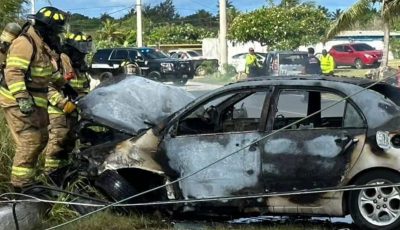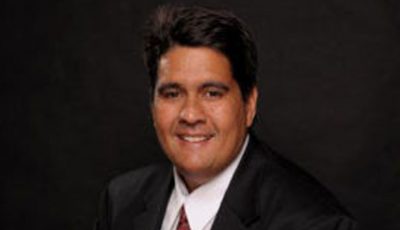Hongqi
The park in Shenyang where Mao’s statue with the outstretched hand stands at the center island of the roundabout is called Hongqi Square. Literally, the word means the “red flag,” so it denotes the highest grade of one’s expenditure for country.
The Red Flag is prominently in display in China and wherever Chinese interests are located. China is good at furling flags, as banners with huge bold characters, and the red color, with myriad of flower arrangements, accompany every festive occasion.
The Red Flag was decided when the Communists took over in 1949. It is a red field with five golden stars in the canton (upper corner nearest the flagpole). The star’s elliptical design features a large one, with four smaller ones in a semicircle toward the fly (the side farthest from the pole).
Red is the most prominent color in China, in this case representing the communist revolution. The five stars denote the unity of the Chinese people under the leadership of the Communist Party of China unifying the four social classes Mao mentioned in his “On the People’s Democratic Dictatorship”, i.e., the working class, the peasantry, the urban petite bourgeoisie, and the national bourgeoisie.
I grew with Kuomintang neighbors seeing the Hongqi as a monstrous divisive symbol and was surprised to find that the “bourgeoisie” were half of the four groups in the symbol. I suppose the doctrinaire anti-bourgeoisie rah-rah of my youth served that prejudice well. The five stars in Hongqi is used by many to refer to the traditional five regions of China (the area between the two rivers of the Huanghe and the Chiang Jiang, Tibet, Xinjiang, Mongolia, and Manchuria), or the five major “five races under one union” of the post-1912 Beiyang Government of the Republic of China (Han, Tibetans, Hui, Mongols, and Manchus), thus making the Hongqi a harmonizing rather a dividing symbol!
This reflection, while it mentions the patriotism in parks, or the unifying intent of the flag, is also about the new symbol of China’s new wealth as its old clunker of a limo that once ferried U.S. President Richard Nixon around in his sudden but historic visit in 1972 just evolved to become China’s most expensive car recently displayed in the Beijing car show.
The Hongqi L5 has celadon (ceramic)-jade door handles, with perforated leather on everything, wood inlays hand-carved with Chinese designs like clouds, a computer tablet console at the center, and even Bose quality sound system. It is sure giving the Phantoms of Rolls Royce, Mulsanne of Bentley, Quattroporte of Maserati, to name a few of the world’s favored rides, a run for their money and desirability, leaving many of what we normally consider as luxury vehicles (e.g., Lincoln, Fleetwood, et al) following the Hongqi L5’s filtered (four exhaust pipes) fumes. It comes with a hefty price: a cool $800,000 minimum that did not faze the buyer of the first one on the sales floor.
I remember seeing a Maserati and a Ferrari on Saipan. I wondered what kind of selfhood issues the person(s) who brought it in had, as it evidently was not brought in for the drive on Saipan’s thoroughfares, until I realized it was possibly a tax-avoidance scheme, eventually being shipped elsewhere in the U.S. where tariffs would be levied on the interstate commerce rate. I guessed.
The selfhood issue, however, remains relevant as I stared at the Hongqi L5 line. Why would anyone buy it in China other than to elevate one’s mianzi (face), or drive one’s girlfriend around if one owned an NBA franchise? (Oooops, wrong story.)
My question, of course, reflects the proletarian perspective of my upbringing. Xi Jinping used the image of China Dream when he ascended the president’s office, and he hammered down “harmony in diversity” as a theme, which is not the unity of the gross misnomer when made to equal “similarity” but rings more truthful in any treatment of diversity anywhere. It is harmony in diversity at play, a theme deeply rooted in the tai chi and the kung fu, and the people’s selfhood name of the people in the middle realm, Zhongguoren.
The CPC lived off the shoulders of the working class and the peasantry for so long until Deng Xiaoping blithely commented that in the reform and opening up era, “some will become richer first than others.” It is now tempered by Xi Jinping’s admonition to CPC bureaucrats that being in government and getting wealthy is a contradiction.
The citizens’ hukou registration system kept everyone in place, making mobility from farm to city difficult; it favored urban dwellers against the peasants. The petite bourgeoisie got its break. Now the Hongqi L5 is the ultimate carrot available to the private entrepreneur.
Hongqi the park reminds me of Mao’s four social classes united in the Red Flag that also brings five regions and five races under one umbrella of sovereignty. It is integral to the China Dream of Zhongguo the Middle Realm, and though its recent incarnation is a car that guzzles 100 liters of gas for every 20 km distance—a real but dumb status symbol—it may also reveal if those who buy one came to wealth in the prescribed and acceptable fashion.



























